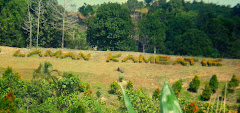
In the spirit of the Kambatik garden, we need to plant native species in our urban landscaping. The lack of native species especially garden shrubs in towns and cities may not be conducive to the conservation of our local wildlife especially birds. Thus we need to reintroduce these forgotten species into the urban environment because urban settings were previously massive jungles which have been clear-felled to make way for housing, commercial , industrial and highway allocations. For a native species that has a special charm and attraction for wildlife is the kemunting . Botanically known as Rhodomyrtus tomentosa, this plant produces fruits on daily basis. There are no seasonal fruiting periods and as such their berries are easily available to the birds all year long making germination possible at all times. This will certainly support the conservation of wildlife and the re population of our natural species which are hardy, less maintenance and less costly to purchase for urbanites.
Jam, jelly or juices can be made from its ripe berries. It has pretty pink flowers and makes it a likely candidate for house garden and parks. As an ornamental shrub it can grow to 1.5 to 2 meters high. Here in Sarawak the plant is also referred to as karamunting and is seen largely in coastal areas especially in open areas near beaches. It is not subject to serious pests and diseases problem. It can be propagated through cuttings or seeds.
It is interesting to note that his plant perform better when cultivated in house gardens than in the wild. At present not many nurseries in Sarawak keep stock of this plant, but I think this will change when the Kambatik identity spreads.
Reference:
Ong Hean Chooi (2004) Buah - Khasiat Makanan dan Ubatan. Utusan Publications and Distributors Sdn Bhd. KL.

No comments:
Post a Comment